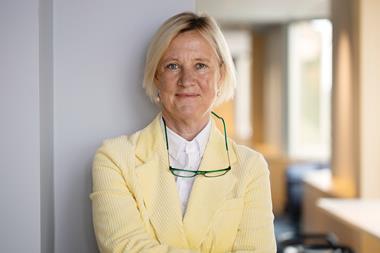As government plans grow more ambitious, the pension funds they want to pay for them grow more cautious, reports Shayla Walmsley.
Two recent reports blame pension funds and fund managers, respectively, for institutions' apparent current reluctance to invest in infrastructure. One, by alternatives data firm Preqin, claims even institutional investors with existing allocations will approach the asset class cautiously over the next few months.
The second, INREV's Investment Intentions survey, blames a lack of investable supply, with 65% of fund managers offering no products within a range of alternatives that includes infrastructure.
Given its liability-matching potential, why would pension funds not consider infrastructure? And for those that are, how best might they invest in it?
Hymans Robertson partner John Hastings points out that infrastructure equity funds aren't necessarily appropriate for derisking defined benefit schemes. "Private sector schemes are all closed to new entrants, and they don't have a 25-year view on equity," he said. "If you look at asset allocation, it's changed. More pension schemes are going into debt rather than equity. It's a persistent trend."
Nonetheless, and despite its vagaries, there is still an appetite for infrastructure investment, not least because mature projects deliver pension payment-matching cash flows that are both predictable and long term. According to INREV, 52% of investors said in 2011 they were likely or very likely to invest in infrastructure.
So they want to - but to date they have not, at least in the UK. According to the National Association of Pension Funds, UK schemes allocate 1.5% to infrastructure, compared with 5% globally and closer to 10% in Australia and Canada, where some schemes' allocation is closer to 15%.
One problem for the UK is the preponderance of small pension schemes without the governance budgets to consider new allocations. Few UK pension schemes could match the recent CalSTRS $500m (€376.2m) investment in US and European infrastructure, for example.
What that could mean is smaller pension schemes relying on blind-pool infrastructure funds to meet their allocation targets. To be sure, some, such as the Merseyside pension scheme, have switched out of bonds to invest £20m (€23.9m) in AMP's anticipated £1bn fund targeting mature European infrastructure assets. Globally, 38 infrastructure funds raised $16bn last year - much of it fresh capital - compared with $31.8bn raised by 41 funds the previous year.
But, given the current broad aversion to blind-pool funds, there is little reason to believe infrastructure will be the exception. "Many investors have invested in infrastructure funds, and it's highly likely they'll continue to do so," said Peter Hofbauer, head of infrastructure are at Hermes GPE. "But not everyone is enamoured with the blind-pool approach. There are different participants in the market, and they won't all take the same route."
If pension schemes are that big, of course, they are more likely to invest directly, which will inevitably mean a joint venture. But if the operating partner exposes infrastructure investors to one source of counterparty risk, government partners expose them to another.
Almost all governments are getting in on the pension funds-and-infrastructure act. Even leaving aside the eye-watering amount of capital sought by BRIC economies for large-scale programmes, you have other governments such as the Philippines, tapping its largest pension scheme for $750m for a public-private partnership (PPP) fund, not to mention the UK mooting a plan to raise £20bn from domestic pension funds, and others, including the Chinese sovereign wealth fund.
Hermes GPE, which manages £4.8bn for pension funds and other institutions, in November began a series of discussions both with pension schemes and the UK Treasury aimed at devising a framework to enable investor access. What that plan will look like is unclear - which in itself is a concern for initial signatories to initial enthusiasts such as the Greater Manchester local authority pension scheme, an investor in the EISER infrastructure fund, which has since criticised the lack of a concrete proposal.
There is little doubt that inadequate investment structures have deterred some pension funds from investing. ATP is a case in point. The DKK579bn (€77.9bn) Danish pension scheme has to date invested more than €1bn in PPP projects, all of it outside its home market, which it says lacks sufficiently attractive ones.
According to Bob Officer, a university professor and sometime adviser to ATP, governments need to be more creative than they have been about attracting pension fund capital, effectively creating a market for investment. How they do so will be a function of the political climate, but targets could include lease terms and interest-rate holidays during construction or upgrading.
"Most projects will require some financial support from government, although this [could be in guarantees and] does not have to be in actual funds," he told IP Real Estate. "It is getting over this hurdle that is limiting the number of projects available."


















No comments yet